Why Plant Leaves Curl: 9 Reasons & Fixes
-

- Last updated:
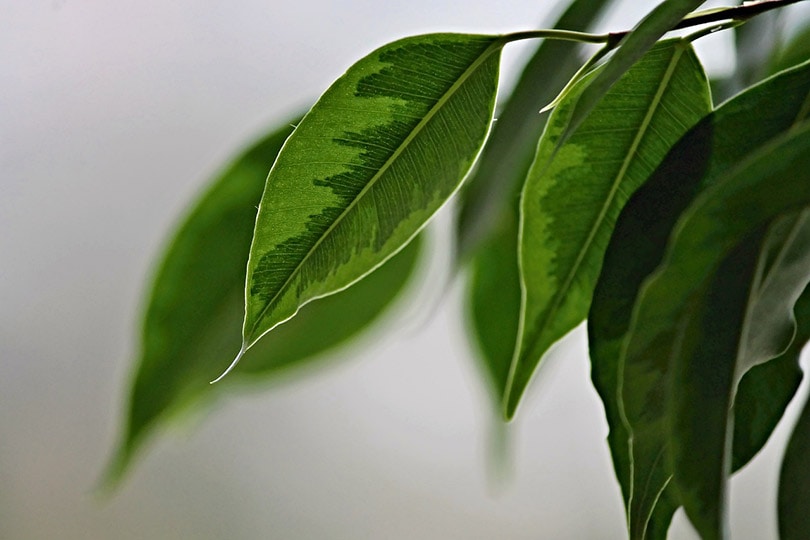
Have you ever come across a plant with curled leaves? What can be the cause of leaves curling upwards or downwards?
There are many plant species in the world. Many are prone to leaves curling. But often, curled leaves are a sign that something is wrong with the plant. Issues such as improper lighting, watering, and nutrient application are known to cause this problem.
The good news is it is not all a loss. Leaf curl is fixable. But you must act fast to prevent further damage to the leaves. In this article, we discuss various reasons for leaves curling as well as possible fixes to these issues.
Keep reading for deeper insight.
The 9 Possible Reasons Why Plant Leaves Curl
1. Too Much or Too Little Light Exposure
Various plants have different requirements for growth. Among the top needs for most plants is light exposure, which plays a crucial role in photosynthesis.
However, not all plants are made the same. Some require low to medium light exposure, while others must receive ample bright light all day to thrive. If there are any changes in these conditions, you start to notice traits like curling leaves indicating discomfort.
Curling leaves in certain plants can be a result of excessive light exposure. For instance, plants like Dieffenbachia and Bromeliad guzmania thrive in low light. If you place them in a spot with excess bright light, their leaves curl inwards in an attempt to shield themselves.
On the other hand, some plants can only thrive when they receive lots of bright indirect light. If these plants are in areas with low to medium light, their leaves start to curl outward to reach out for more light.
Examples of plants that love lots of light are basil, Jade plant, and Geranium. Note that these plants love bright indirect light. Direct light exposure can also lead to curling leaves.
2. Insect Infestation

If you notice your plant leaves curling, check to see if there’s an insect infestation. Among the biggest perpetrators of this are aphids. They have a soft body and vary in color. When they attack plants, they attach their sucking mouth parts to them and begin sucking sap. Other common insects that attack plants leading to curling leaves include white flies and thrips.
3. Disease
A sick plant will start showing signs such as curling leaves. An example is the leaf curl disease that mostly affects nectarines and peaches and is caused by Taphrina deformans fungus.
- Stunted growth
- Yellowing of plant vein
- Leaves puckering
- Leaves curling
- Excessive branching
4. Overwatering or Underwatering
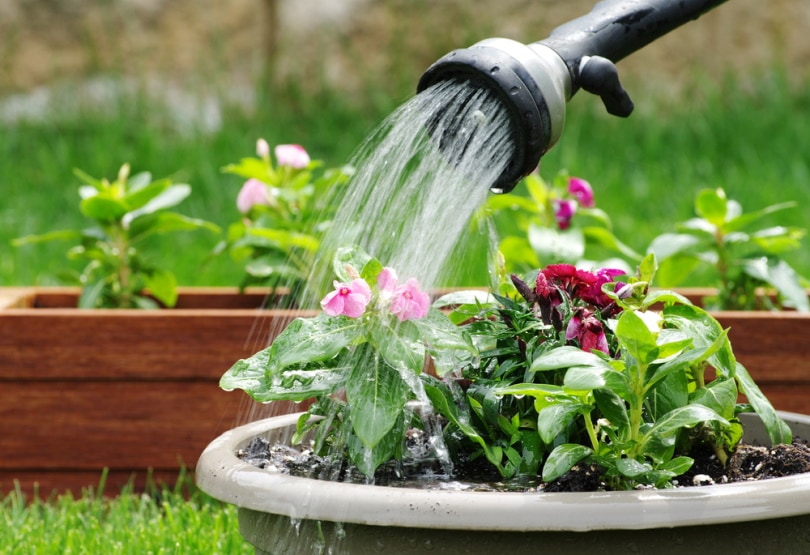
Water is essential to plants. If a plant doesn’t get enough water, it won’t survive. However, it’s important to note that the amount of water you give your plants matters. Overwatering or under-watering is known to cause all sorts of plant issues, including leaf curling.
When you overwater your plants, it causes stress leading to leaves curling. It’s easy to overwater indoor plants, for example, since they sit on a pot. If this pot lacks proper drainage, the excess moisture in the soil starts to harm the plant. Some plants do love moist soil conditions, but very few prefer wet conditions.
Underwatering is also another cause of curling leaves on plants. Because there’s too little moisture in the soil, these leaves also start to droop downward. If you don’t water the plant immediately, these leaves can dry up and drop from the plant.
5. Wind
Plants like tomatoes don’t like windy conditions. This is why it is important to pick the best spot to plant such delicate plants. The rushing wind leads to excessive transpiration of moisture from tomato leaves.
When this happens, you start to notice the leaves curling to prevent further transpiration. It’s not only tomatoes that don’t like windy conditions. Other plants that also respond the same way include Gardenia, Lilly, and Fiddle Fig.
6. Low or High Humidity
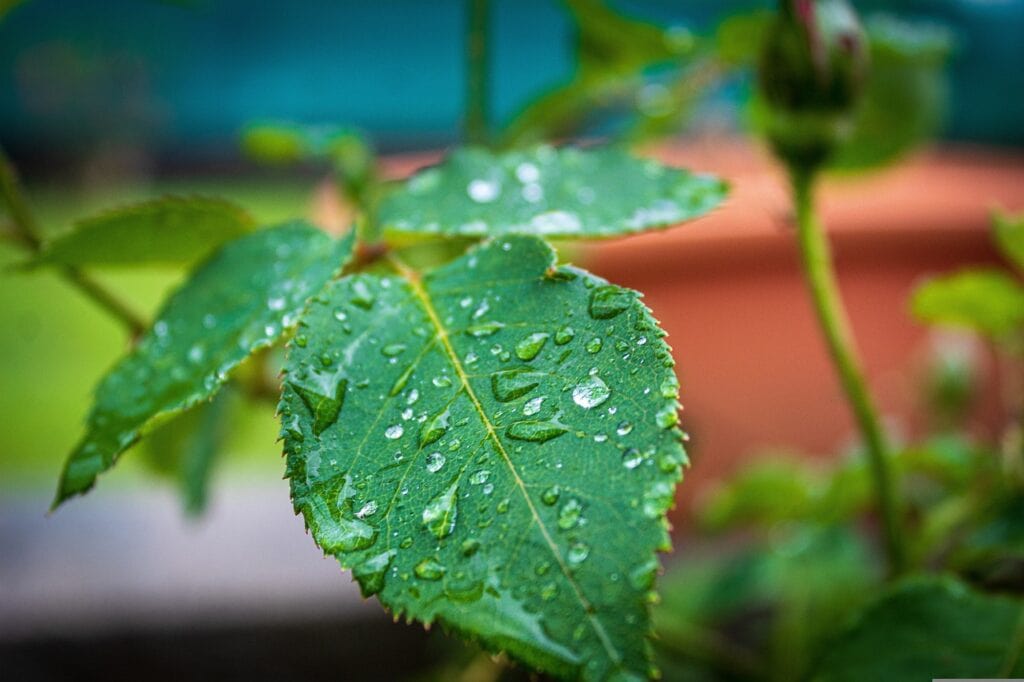
Plants grow in all types of conditions. Among the main conditions that will determine the plants you can grow is the humidity levels. Places with high humidity can’t support low humidity plants and vice versa.
If you have high humidity plants in a low humidity environment, one issue you’ll face is leaf curling. Low humidity causes excessive transpiration so the plant tries to prevent further water loss by closing its stomata. The leaves will tend to curl downward and under.
On the other hand, low humidity plants growing in highly humid conditions also curl their leaves up in an effort to encourage more transpiration. Often this goes hand in hand with overwatering or the presence of excess moisture in the ground.
7. Chemical Exposure
Plants tend to be sensitive to harsh chemicals. So, before you consider applying chemicals to control pests, know the side effects.
Chemical exposure from herbicides, fungicides, and other chemicals can cause leaves to curl downward. In addition, these chemicals can also lead to permanent leaf damage. This is why it’s important to always follow the instructions on the label.
8. Temperature and Environmental Changes
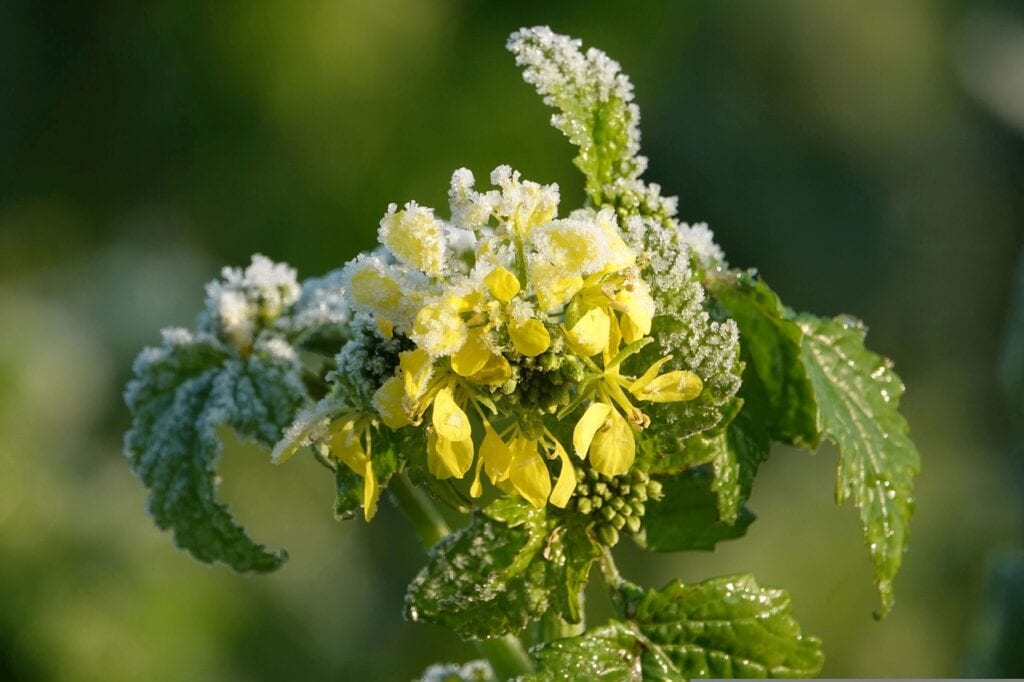
When it comes to temperatures, plants vary in their needs. Some will do well in hot conditions, others in cold climates, while some prefer the middle ground.
If it gets too hot or cold, plants that prefer moderate temperatures can start curling their leaves. The sudden change in temperature causes stress for the plants. This is why they alert you to this problem by curling leaves. Often, the temperature needs aren’t the same for houseplants in particular.
In addition, sudden environmental changes can lead to leaf curling. For instance, if there’s a sudden heat wave or frost, outdoor plants can end up with curling leaves.
9. Nutrient Deficiency
Are your plants getting their nutritional needs met? Another reason for leaves curling on plants is due to nutrient deficiency. The main nutrients that your plants need for proper growth are phosphorus, nitrogen and potassium.
When plants lack nitrogen, their leaves not only curl, but they also turn yellow. Yellowing is a serious issue in plants because the next stage is browning and death.
On top of that, plants also need phosphorus. Lack of phosphorus causes plant leaves to start turning bluish and curling downward. The older leaves don’t get any nutrients so they tend to dry up and fall off the plant.
A lack of potassium causes plants to become weak and have yellowing leaves. If this keeps on, the entire plant can wither and die.
How to Fix Curling Plant Leaves
It’s important to observe your plants and note why the leaves are curling. Only after identifying the issue can you come up with a solution. Below are different ways to fix curling leaves. Note that immediate action is necessary to save these leaves from drying up.
Proper Lighting
Get to know the type of plants that you have and their light needs. If the plants thrive better in low and medium lighting, avoid spots with bright direct light. The same applies if the plants prefer bright indirect light. Ensure you pick a spot that gets ample bright light for many hours in a day.
Pest and Disease Control
Plants growing inside or outside your home are prone to pests and diseases. Always do an inspection to see if there are any pests attacking them. If you see these little insects, start by drenching your plant with water. Smaller plants are easier to dunk in a bucket of water to dislodge all the insects.
After that, you can apply some rubbing alcohol or apply mild herbicides that won’t damage the leaves. As for diseases, first, separate the plant from the rest and then find out if there’s a way to treat it. If not, ensure you dispose of this plant carefully to prevent spreading the sickness.
Correct Watering Plan
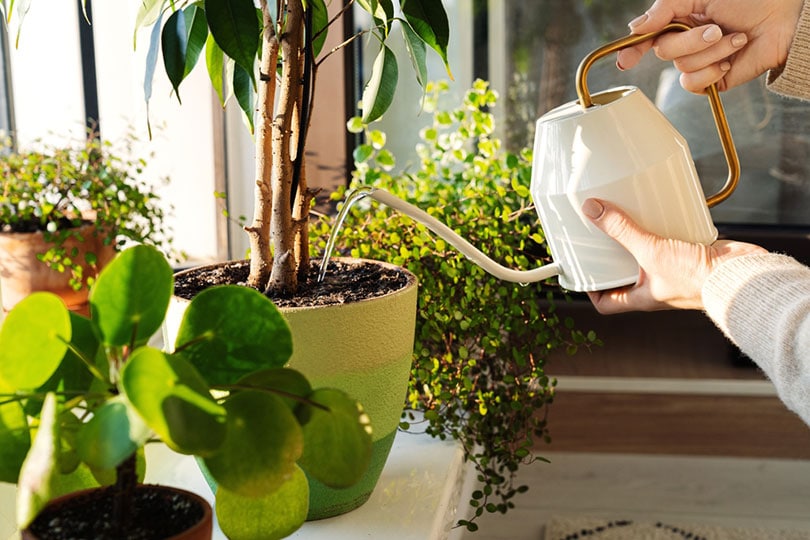
Having different plants at home helps create diversity. But since all these plants have different watering needs, it’s better to have a plan so that you are able to keep each plant happy and prevent curling leaves. Also, you can get a moisture meter to check the water content in each plant.
Wind Protection
Wind-sensitive plants will curl their leaves to prevent further transpiration. Therefore, it’s better to plant such plants in an area protected from the wind. Or, you can plant other wind-resistant plants like hedges around to protect your plants.
Humidity Control
Check the humidity levels and ensure they match the type of plants that you have. If you notice the leaves curling, correcting the humidity levels will lead to uncurling. It’s easy to reduce humidity levels using a dehumidifier around the plants. If you want more humidity, have a bowl with water nearby or get a humidifier.
Correct Chemical Use
Herbicides and pesticides can help protect your plants, but you must use them in the proper manner. Check the manufacturer’s label for correct instructions on how to apply each to your plants. Also, you can try other preventive measures before chemical application.
Fertilizer Application
Plants need nutrients to grow. This is why it’s important to feed them, especially during the growing season. Ensure you use proper fertilizer for each plant to correct curling leaves and prevent further damage.
Final Thoughts
Plants are amazing, but they tend to be prone to certain issues that lead to curling leaves. Whether growing indoors or outdoors, a plant can curl its leaves for a few reasons. This article addresses such reasons and how to fix these curling leaves to prevent further harm.
Some causes of curling leaves include improper lighting, overwatering or underwatering, pests and diseases. It’s essential to fix these issues as soon as you notice them. Failure to do so can lead to complete damage to the plant.
Featured Image Credit: manfredrichter, Pixabay
Contents

